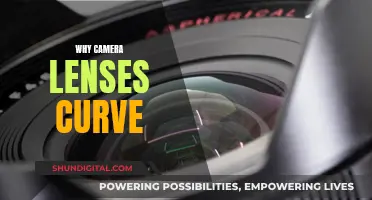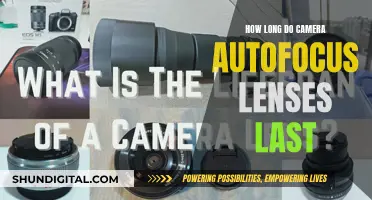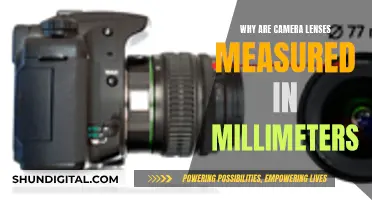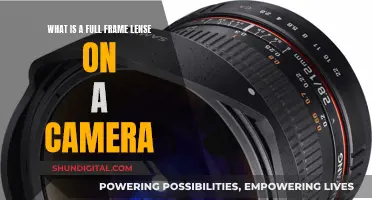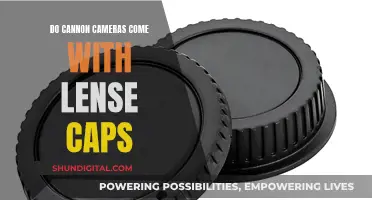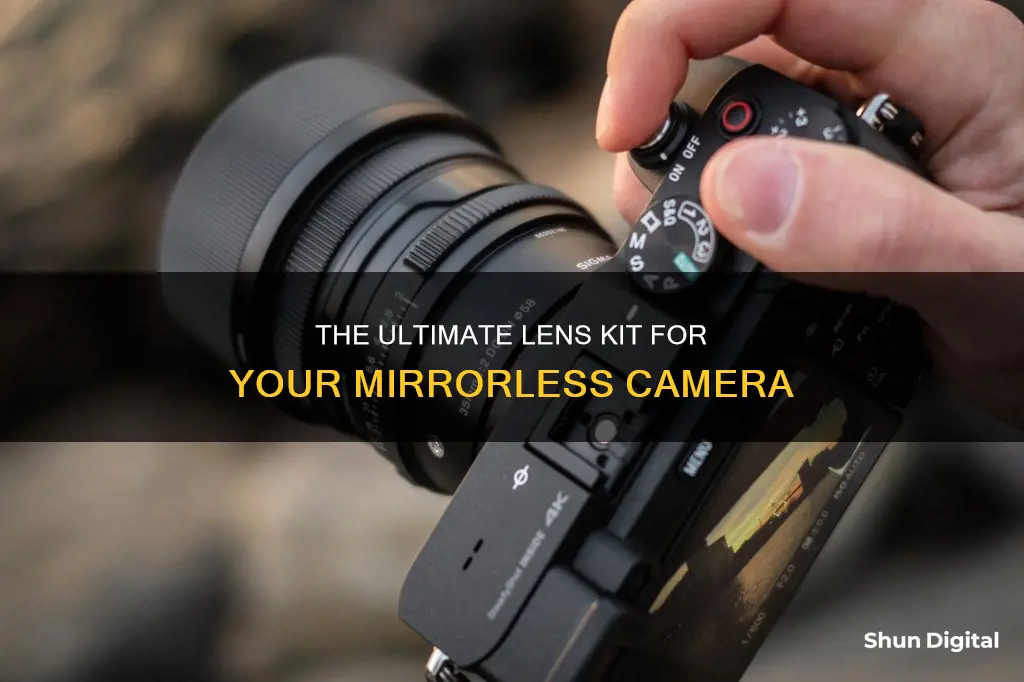
Mirrorless cameras are a type of camera that does not have an internal mirror. They are made up of two parts: the body and the lens. The lenses for these cameras are usually more compact and lightweight than DSLR lenses. There are two types of mirrorless camera lenses: prime and zoom. Prime lenses have fixed focal lengths, while zoom lenses allow for varying focal lengths.
When choosing a lens for your mirrorless camera, there are several factors to consider, including size, weight, features, and compatibility. It is also important to understand the characteristics of the lens, such as focal length, aperture, maximum aperture, and depth of field.
There are many different types of mirrorless camera lenses available, including macro, telephoto, wide-angle, and standard lenses. Specialty lenses, such as fisheye, tilt-shift, and infrared lenses, can also be used to give your photos a unique look.
It is important to note that not all mirrorless camera lenses are compatible with all cameras, so it is essential to check the compatibility before purchasing. Additionally, there are third-party lens manufacturers that create lenses for multiple camera brands.
| Characteristics | Values |
|---|---|
| Focal Length | Measured in millimeters, the focal length is the distance between your lens's point of convergence and the camera sensor. This parameter indicates how much of a scene your camera can capture. Smaller number ratings have wider angles of view, while larger ratings offer a narrower angle of view. |
| Aperture | Aperture describes the size of the opening that lets light in. Expressed in f-stops, aperture is counterintuitive. Larger numbers show a smaller opening, whereas smaller openings have a deeper depth of field. For example, an f/2.8 lens allows more light into the camera than an f/4 model. |
| Maximum Aperture | Maximum aperture shows the maximum width that a lens aperture can open. Lenses will list a maximum aperture on their barrels for easy identification. Wider apertures are good for low-light conditions like night photography. |
| Depth of Field (DoF) | This is the distance between the closest and farthest object in a photo. |

Wide-angle lenses
When choosing a wide-angle lens, there are a few key factors to consider. Firstly, the focal length will determine the "zoom level" of your lens. Wide-angle lenses typically have shorter focal lengths, such as 11mm or 14mm. The smaller the number, the wider the viewing angle.
Another important factor is the maximum aperture, which affects the amount of light that can enter the lens. A larger maximum aperture, such as f/1.4, allows for faster response times and shallower depth of field, resulting in blurred backgrounds.
For mirrorless cameras, some recommended wide-angle lenses include:
- Sony FE 12-24mm F2.8 GM: A premium wide-angle zoom lens for full-frame Sony cameras, offering excellent image quality and a bright aperture.
- Sigma 14-24mm F2.8 DG DN Art: A less expensive alternative to the Sony FE 12-24mm, offering similar image quality and a slightly narrower field of view.
- Sony E 10-18mm F4 OSS: A good option for APS-C Sony cameras, providing a wide field of view and a constant f/4 aperture.
- Rokinon 12mm f/2.8: A manual focus lens that offers a wide 180-degree field of view and excellent low-light performance.
- Olympus M.Zuiko Digital 12mm f/2: A sharp and compact wide-angle lens for Micro Four Thirds cameras, offering a bright f/2 aperture.
- Panasonic Lumix G 8mm f/3.5 Fisheye: A unique wide-angle lens for Micro Four Thirds cameras, delivering a full-frame 180-degree angle of view.
When choosing a wide-angle lens, it is also worth considering the build quality, weight, price, and compatibility with your camera system. Some lenses may be designed specifically for certain brands or sensor sizes, so be sure to check before purchasing.
Are Your Camera Lenses Radioactive? Here's How to Tell
You may want to see also

Telephoto lenses
Many Focal Lengths in One Lens
The ability to change focal lengths quickly with a telephoto zoom lens is a huge advantage when dealing with unpredictable conditions. This increases the number of potential images you can capture in a single shooting session. For example, when shooting wildlife, you may know the action is coming but not where from. With a telephoto zoom lens, you can adapt to changing conditions and quickly zoom in on your subject.
Weight and Size Savings
One of the biggest advantages of mirrorless systems is that by removing the mirror from a traditional DSLR, lenses can be placed closer to the sensor. This, combined with the use of smaller sensors, means that telephoto zoom lenses can be much smaller and lighter.
Olympus and Panasonic's Micro Four Thirds platform, for instance, uses a much smaller sensor, resulting in a 2x crop factor that allows for much smaller lenses. This means that a lens like the Olympus 40-150mm f/2.8 is the equivalent of a full-frame 80-300mm f/2.8 but at a fraction of the cost and weight.
The Crop Factor
The crop factor of mirrorless systems is a big advantage for wildlife or sports photographers as it gives them much greater reach from smaller lenses. For example, the Olympus 40-150mm f/2.8 lens mentioned above offers the same focal length range as a full-frame 80-300mm f/2.8 lens but is just over six inches long and weighs less than two pounds.
Cost Savings
By removing the mirror assembly from the body and reducing the amount of glass needed in lenses, manufacturers can significantly reduce production costs. This means that for the price of some high-end DSLR lenses, you can buy an entire professional-quality mirrorless system.
Our Top Picks
- Olympus 40-150mm f/2.8: This lens offers a fast aperture zoom in a very small package, saving you over $4,000 and four pounds in weight compared to a comparable DSLR 300mm f/2.8 lens.
- Fujifilm 50-140mm f/2.8: This lens offers a great range and solid build quality at a fast fixed aperture. It produces stunning images and is clearly destined to become the workhorse of the professional Fujifilm line.
- Fujifilm 55-200mm f/3.5-4.8: While the 50-140mm lens is built with the working pro in mind, the 55-200mm lens hits the sweet spot in terms of build quality and size. It produces stunning images and will fit in a large pocket, making it a great travel or backcountry telephoto lens.
- Sony 70-200mm f/4 FE lens: This full-frame lens is well-built and offers a versatile range for the Sony A7 system. While it's not much smaller than similar DSLR lenses, it allows users to capture amazingly high-resolution files with Sony's flagship 36MP A7R body.
Understanding Camera Lenses: Objective Focal Lengths Explained
You may want to see also

Macro lenses
Canon RF
The Canon RF 100mm F2.8 L Macro IS USM is an exceptional lens, offering a reproduction ratio of 1.4:1, highly effective stabilisation, and a dedicated bokeh control ring. It is, however, quite expensive. For a more affordable option, consider the Canon RF 85mm F2 Macro IS STM, which provides five stops of optical stabilisation and up to eight stops on bodies with in-body stabilisation.
Sony E
The Sony FE 90mm f/2.8 Macro G OSS is a superb choice for Sony E-mount users. It delivers impeccable image quality and is packed with features like optical stabilisation and internal focusing, making it ideal for both macro and portrait photography. While it is pricey, the quality justifies the cost.
L-mount
The Panasonic Lumix S 14-28mm F4-5.6 Macro is an excellent choice for L-mount users. While it doesn't offer true macro magnification, it has a minimum focusing distance of just 15cm, allowing you to get extremely close to your subjects. It's also relatively affordable and lightweight, making it a great option for macro enthusiasts.
Fujifilm X
The Fujifilm XF 80mm F2.8 R LM OIS WR Macro is a sublime lens for Fujifilm X-mount users. It offers a 1:1 reproduction ratio, weather-resistant construction, and linear motors for quiet autofocus. While it is expensive, the optical quality and versatility make it a worthwhile investment.
Micro Four Thirds
The OM System M.Zuiko ED 90mm F3.5 Macro IS PRO is a fantastic choice for Micro Four Thirds users. It offers a 2:1 magnification ratio, which effectively becomes 4:1 due to the crop factor of the Micro Four Thirds system, resulting in incredible detail. It is expensive, but the magnification and image quality make it a top choice.
The Camera Power of Note 8: How Many Lenses?
You may want to see also

Standard lenses
- Canon RF 50mm f/1.8 STM Lens
- Canon RF 35mm f/1.8 Macro IS STM Lens
- Sony FE 50mm f/1.8 Lens
- Sony FE 50mm f/1.4 GM Lens
- Sigma 30mm f/1.4 DC DN Contemporary Lens (for Sony E-mount)
- Nikon NIKKOR Z DX 24mm f/1.7 Lens (for Nikon Z-mount)
Adapting EF Lenses to Mirrorless Cameras: A Guide
You may want to see also

Specialty lenses
To add some creative touches to your shots, consider getting special effects lenses. The most popular examples are tilt-shift styles, which add optical distortion to shots to make images look symmetrical and pleasing to the eyes. Others let you adjust focus to add bokeh effects.
Sigma Lenses: Blackmagic Cinema Camera Compatibility Guide
You may want to see also
Frequently asked questions
There are two main types of mirrorless camera lenses: zoom and prime. Zoom lenses have a range of focal lengths, while prime lenses have a fixed focal length and wider apertures. Prime lenses are also faster and offer sharper images.
There are several types of prime lenses, including standard, macro, wide-angle, telephoto, and fisheye. Standard lenses are versatile and can be used in different types of photography. Macro lenses are used for close-up macro photos and offer exceptional detail at a very close range. Wide-angle lenses help fit a large area into your frame and are ideal for landscape or street photography. Telephoto lenses are zoom lenses with varying focal points and are used to isolate distant subjects. Fisheye lenses produce extreme panoramic shots with curved edges.
When investing in a new camera lens, consider the size and weight, features, and compatibility. Lenses can be heavy and affect portability, so consider the size and weight of the lens. Look at the lens specifications and check for features like built-in autofocus. Finally, ensure the lens is compatible with your camera body.
Lenses are tools that help bring light to a fixed focal point and are made from a series of concave and convex glass plates. All lenses focus and filter light for optimal exposure to the sensor. Some characteristics that affect the quality and overall look of your photos include focal length, aperture, maximum aperture, and depth of field.


